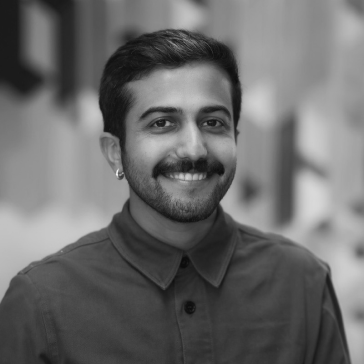Module 3: DESIGNING FOR GENDER DIVERSITY
Designing for Gender Diversity will dive into physical and physiological diversity, and specifically gender diversity. Gender diversity has typically taken a lot of focus when it comes to talking about diversity – but how can digital designers actually design for gender diversity? This module aims to foster more understanding and nuanced design concepts related to gender diversity and how designers can apply these in digital experiences to create and shape more inclusive, empathetic and equitable designs.
Speaker 01: Binit Vasa
About Binit
Binit Vasa is a big picture generalist that works at the intersection of design, strategy, business, culture, community and partnerships with the aim of bridging the gap between human innovation and planetary boundaries. He has over 13 years of professional experience working across Asia and Europe for companies like Tata Group, Flipkart, IKEA and LEGO on subjects like branding, consulting, communication and foresight. As an insatiably curious person and a staunch believer of lifelong learning, you will always find him engaged in discovering nuggets of culture via languages and mythologies.
Designing for Gender Diversity
In a time when non-binary gender identities are gaining visibility and recognition in public discourse, it is curious to imagine a future where gender can be largely fluid. How will gender fluidity change the way we live and design the world around us? How would it change our social structures, cultural norms and physical spaces? And how will designers contribute to re-imagining this vision?

Speaker 02: Luke Murphy
About Luke
Luke (they/them) currently leads the Marketing team at zeroheight. Before zeroheight, Luke worked for lots of companies starting with M, including Memrise, Mr & Mrs Smith and Microsoft. They host the Design Systems WTF podcast, and co-organises the Converge and WDC conferences in the UK. When they’re not shouting about design systems and designops, they’re busy raising their 10 year old son, singing in a punk band or telling the world why Josie and the Pussycats is a criminally underrated film.
Systems of Harm: How Design Systems Reinforce Gender-Exclusion, and What We Can Do About It
Design systems are great. They help us create consistent, high-quality experiences, while also making us more efficient as teams. But what if the way we do design systems are also reinforcing systemic exclusion and othering? Luke will take us through both their and other folks’ experiences of how our designs create discriminatory spaces, critique interfaces for how they could be better set up for gender inclusion, and workshop and provide examples of how we can approach inclusion in design in a systemic way. It’s not our fault as designers when we unintentionally reinforce bad things, but it is our responsibility to ensure that we aren’t perpetuating systems of harm.

